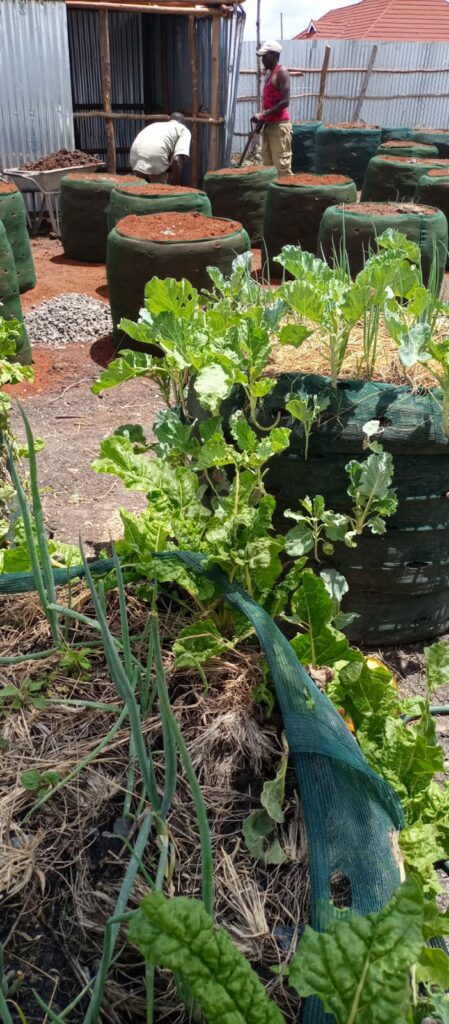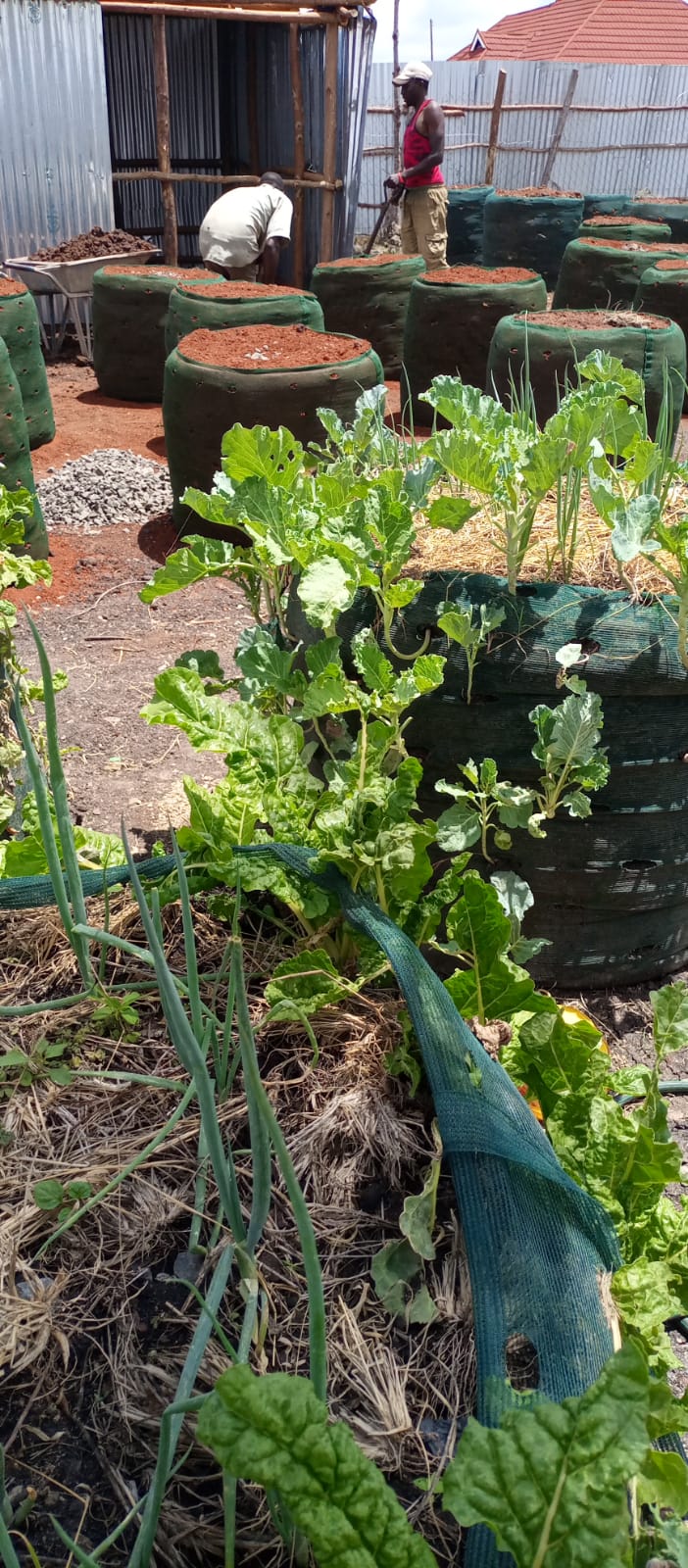My kitchen gardening journey started with a story about depression. It happened during COVID-19 lockdowns because of being indoors for weeks and a busy job. A few months later, I quit the position and moved out of the apartment and the city.
Gardening was top of my to-do list. Working on the soil, watching plants grow and caring for them helped me heal. Cliché, but it is true. I was saving money too. The small farm – containers and sacks – met all my grocery needs. I had yet to think of selling the produce for income until I met Gracie.
Urban Kitchen Gardening
Gracie is part of a group I call Urban Kitchen Gardeners. They grow crops in small spaces. For example, Gracie cultivates in vertical sacks. Her house and farm are on a 50by100 space along Kangundo Road. Vertical farming increases the amount of produce per square foot.
Water is a significant cost. Most urban kitchen gardeners use piped water which can be expensive if metered. Gracie’s solution was to harvest rainwater on the ground. She dug a small water pan and applied a dam liner. Others use buckets and drums to collect the rainwater for irrigation. However, this is also a challenge due to storage space.
Access to soil and manure are other problems. Gracie obtains manure from her neighbours who keep rabbits and chickens. She barters the manure for vegetables that are not sold due to quality/cosmetic shortcomings. These are used as feed for the rabbits and chickens.
Other kitchen gardeners buy soil, potting mixtures, and compost. Worm bin composters, potting mixture sellers and organic compost vendors provide the suppliers.
Small-scale farming restricts the use of conventional pesticides and insecticides due to economic reasons. Hence, there is a preference for natural methods such as intercropping with rosemary to ward off pests. Home-based solutions like vinegar solutions are also shared as solutions in online groups.
Social media communities play a vital role in growth and knowledge transfers among kitchen gardeners. It is from these groups that I learned how to apply eggshells and banana peels for calcium and potassium respectively. People in these groups farm to relieve stress, have fresh vegetables whose source they can trust, save money, and earn some income.

Earning Income
With biweekly harvests, Gracie has enough vegetables for her family. During school holidays, she saves up to KES 150 a day from buying vegetables for lunches and dinners. In addition, she earns some income from selling any excess to her neighbours. She sells wholesale, at a price of KES 50 to avoid driving Mama Mbogas out of business. Customers preferring smaller units or lower prices can buy from these kiosks.
Gracie is a hyper-localized food supplier because Mama Mbogas buy from her to resell. Can this be replicated and scaled up to provide food for cities?
Potential
Kitchen gardening by itself could be too small. Hyper localization of food supply like Gracie could be key. Cities are increasingly expanding into surrounding arable land. Consequently, urban food supplies must come from further and further away.
We learned from the COVID-19 pandemic that supply chains can be disrupted easily. Using income as an incentive, more people can grow food for themselves and their immediate neighbourhoods. This way, we have a shot at both nutritional diversity and urban food security.
This article was first published by People Daily in March 2022

